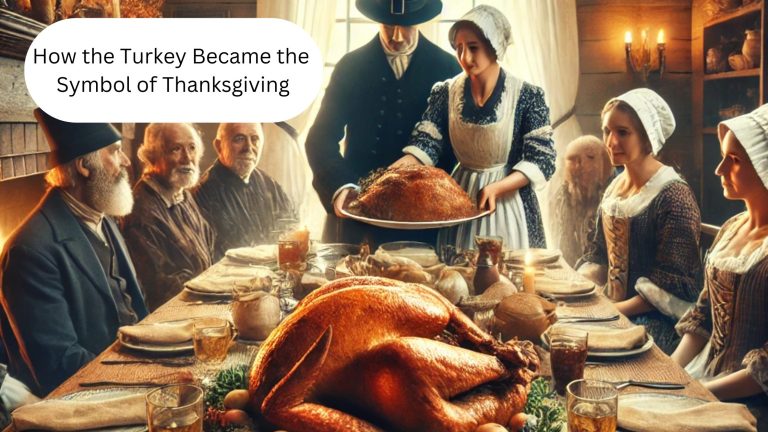
Title: The History of Thanksgiving: From Pilgrims to Modern Day Traditions
Introduction
Thanksgiving is a cherished holiday that embodies family, gratitude, and feasting. But the origins and evolution of Thanksgiving are deeply rooted in historical events, cultural influences, and shifts in tradition. While the story of the Pilgrims and Native Americans sharing a meal in 1621 is often cited as the “first Thanksgiving,” the holiday we celebrate today has been shaped over centuries, reflecting both historical narratives and cultural values.
1. Early Thanksgiving Celebrations and Harvest Feasts
- Native American Harvest Festivals: Long before the arrival of Europeans, Indigenous tribes across North America held ceremonies to celebrate the harvest and give thanks to the earth. These feasts were spiritual events that honored the natural world and the bounty it provided.
- European Influence: In Europe, harvest festivals were also common, especially in England. Celebrations of a good harvest often included communal meals, prayer, and feasting.
- The First “Thanksgiving” in North America (1621): The event in Plymouth, Massachusetts, often labeled the “First Thanksgiving,” was a three-day feast between the Pilgrims and the Wampanoag people. This gathering included venison, fowl, and native vegetables rather than modern Thanksgiving staples like pumpkin pie.
2. The Pilgrims and Puritans’ Influence on Thanksgiving
- Pilgrims in Plymouth: The Pilgrims who arrived on the Mayflower sought religious freedom and were heavily influenced by their Puritan beliefs. Their first winter was brutal, with many succumbing to the cold and illness. The following year’s successful harvest, however, led to a period of thankfulness and celebration.
- Role of the Wampanoag People: The Wampanoag, led by Chief Massasoit, played a crucial role in aiding the Pilgrims. Squanto, a member of the tribe, taught the settlers how to cultivate the land, fish, and survive. The 1621 feast was a demonstration of cooperation and mutual respect, though it was not labeled a “Thanksgiving” at the time.
3. The Evolution of Thanksgiving Celebrations
- Subsequent Thanksgiving Feasts: In the years following 1621, various colonies and communities held days of prayer and thanksgiving, usually to commemorate specific blessings or events. These were not annual celebrations, nor were they on a fixed date.
- Thanksgiving in the 18th Century: During the Revolutionary War, the Continental Congress designated several “thanksgivings” as national days of gratitude. These celebrations typically involved religious observances and family gatherings.
- George Washington’s Proclamation (1789): The first President of the United States proclaimed a national day of Thanksgiving, setting the precedent for federal acknowledgment of the holiday. Washington’s proclamation focused on unity and gratitude for independence and success.
4. The Role of Sarah Josepha Hale
- Campaign for a National Holiday: Sarah Josepha Hale, a magazine editor and writer, is often credited as the “Mother of Thanksgiving.” Throughout the 19th century, she lobbied for Thanksgiving to become a national holiday, writing letters to several presidents over three decades.
- Abraham Lincoln’s Proclamation (1863): During the Civil War, Lincoln declared Thanksgiving a national holiday to be celebrated on the final Thursday of November. This was part of an effort to unite the nation, emphasizing the need for Americans to reflect on their blessings, even amidst hardship.
5. Thanksgiving in the 20th Century
- Shifts in Date: Thanksgiving continued to be celebrated on the last Thursday of November until 1939, when President Franklin D. Roosevelt moved it up a week to extend the holiday shopping season, which had become economically important. After public pushback, Congress ultimately set Thanksgiving as the fourth Thursday in November in 1941.
- Expansion of Thanksgiving Traditions: The holiday began to take on the cultural elements we recognize today: the Macy’s Thanksgiving Day Parade (first held in 1924), football games, and large family gatherings. Turkey became the centerpiece of the Thanksgiving meal by the late 1800s, replacing the fowl and venison of earlier feasts.
6. Modern Thanksgiving and Cultural Reflection
- A Day of Gratitude and Reflection: Today, Thanksgiving is both a cultural and family-centric holiday, focused on gratitude and often including charitable activities, such as community dinners for those in need.
- Thanksgiving and Native American Perspectives: For many Indigenous people, Thanksgiving is a day of mourning, honoring their ancestors and recognizing the devastating impact of European colonization. Some choose to observe the holiday in ways that reflect their heritage and narratives.
7. Thanksgiving Around the World
- Canada’s Thanksgiving: Canada celebrates Thanksgiving on the second Monday in October, commemorating similar themes of gratitude and harvest. The first official Thanksgiving in Canada was in 1879, though harvest celebrations had long been observed.
- Other Nations’ Celebrations: Thanksgiving-like holidays exist in other cultures as well, though they’re often unrelated to the American tradition. Countries like Japan, Germany, and South Korea observe similar events, focusing on gratitude and the harvest season.
8. Thanksgiving in Pop Culture
- Thanksgiving in Media: Thanksgiving has been popularized through television, movies, and literature, often depicted as a time for family reunion and personal growth.
- Black Friday and Cyber Monday: In recent decades, the day after Thanksgiving has become synonymous with shopping and discounts. Black Friday sales mark the beginning of the holiday shopping season, with Cyber Monday following for online deals.
Conclusion
Thanksgiving is a complex holiday, intertwined with both myth and history. While its modern form emphasizes unity, gratitude, and reflection, Thanksgiving’s roots encompass a much wider array of influences and perspectives. Recognizing these layers allows us to appreciate the holiday more deeply and to honor the diverse stories that shape it.


